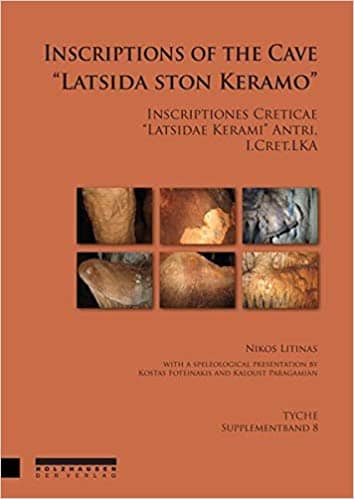Inscriptions of the Cave "Latsida Ston Keramo"
850,00 TL
ISBN-ISSN:
9783902976086
Fiyatı Düşünce Haber Ver

Inscriptiones Creticae "Latsidae Kerami" Antri, I.Cret.LKA
112 s, karton kapak, İngilizce.
The existence of ancient graffiti on the walls of caves is a rare and important discovery. The Graffiti in the cave "Latsida ston Keramo" are c. 2000 years old. The volume is the edition of a series of graffiti from a remote cave in Crete. The cave "Latsida ston Keramo" was not well known and was difficult to locate. Although there were reports of archaeological findings on the surface, no official archaeological work has ever been undertaken.
The introduction to this volume is divided into two chapters. The first one contains a collection of the described or published Greek inscriptions incised into or written on the walls, either inside or in the entrances, of natural caves and caverns dated from the fifth century B.C. to the sixth century A.D. The second chapter is an English translation of a paper published in Greek by the speleologists K. Foteinakis and K. Paragamian in the third Pancretan Speleological Symposium. This is included as it will help the reader to understand the natural underground space and environment of the cave.
The graffiti are incised or scratched into or written on the flowstones, the walls, the stalagmites or the columns of the cave. About 40 names, masculine or feminine, appear. None of the bearers of the names can be identified with a certain person known from other Cretan inscriptions or literature. The possible origin of the identifiable names in the cave is Crete (mostly cities of the eastern Crete), but other areas, e.g. Thessaly, Boeotia and the Aegean islands, should not be excluded. Based on the internal evidence and the palaeographical details a date that could be assigned to these graffiti is from the first century B.C. until the end of the second century or early third century A.D.
The people who inscribed these names were either natives or migrants, who found themselves in this area of Crete for a certain purpose, and found a good reason to spend some time visiting this remote place. They might have been local farmers or/and shepherds or travelers or/and traders or people who were trying to escape from their social condition within the community and/or from its laws, who found shelter in this cave. If the graffiti (or some of the graffiti) are dated to the Hellenistic period in Crete, a second possibility is that all these men could have been members of a garrison or a patrol whose duty was to protect the countryside or the roads from "enemies" or "outsiders". The third possibility concerns the well-known ritual kidnapping of young boys by adults, which has been recorded by Ephorus (cited by Strabo).
